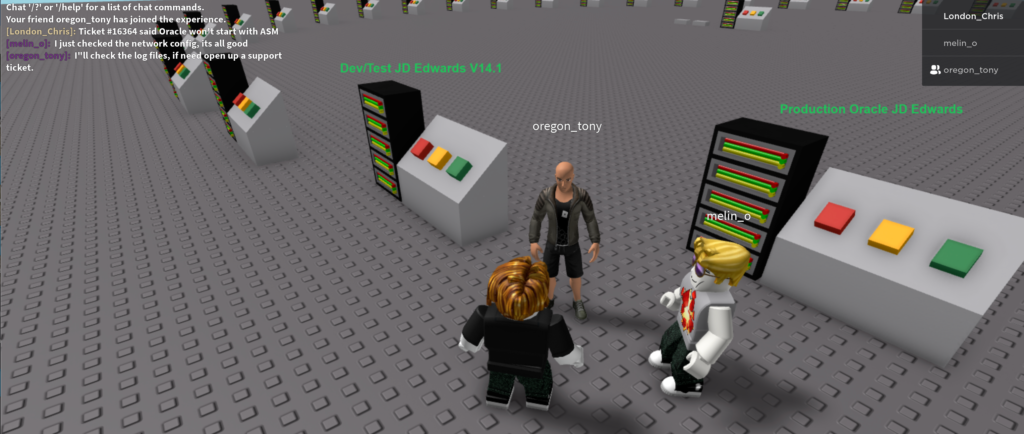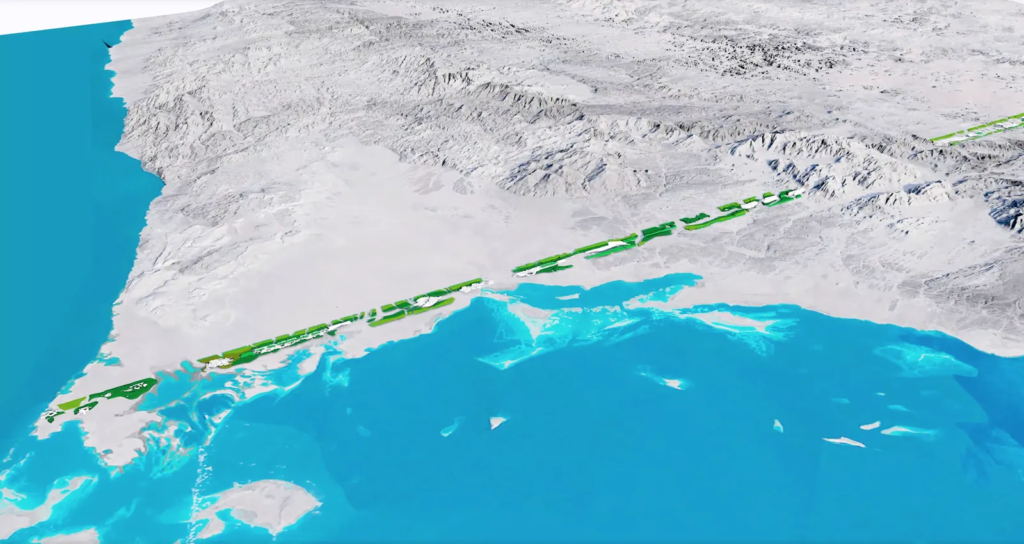
This example is a partially fictionalized re-creation of an actual scenario where the Metaverse might have a legitimate use case from the “business” point of view. My co-workers and I were working on a problem related to an Oracle database, and three of us from different parts of the world had to come together. We had one concern: we didn’t want all of us doing diagnostic actions on the same server simultaneously. Naturally, we just fired up a Slack meeting to coordinate, but the question came up, “What would be Metaverse equivalent of working together on the same problem be like?”
Many people might simultaneously work in a larger data center environment on the server fleet. How do you coordinate your actions, so you don’t step on each other?
We created this simulation using Roblox and the API provided by the cloud vendor we are using. The servers that you see listed as “Production Oracle” and “Dev/Test JD Edwards” are virtual environments, with each cabinet you see made up of dozens of individual VMs. We made an ad-hoc rule, “If you are standing in front of a server cabinet, that means you are logged in and making changes…” So for a few hours, the three of us wandered around the virtual data center and were simultaneously SSH-ed into the machine we were standing in front of and doing work.
Maybe it is a trivial example, but it shows what might be possible in the future, especially when our virtual “server cabinet” is a fully activated “digital twin” of the real servers. In this example, we rigged up the Green/Yellow/Red buttons to Start, Suspend, and Stop the environments, but in the future, full instrumentation of each server blade could be possible (and will be).
The more significant point is in a recent article: “Facebook’s Metaverse is apparently filled with mostly empty sad worlds.” This article coincides with an apparent shift in Meta’s (Facebook) strategy to target the business world as consumers of the Metaverse instead of individuals. Our Roblox Data Center, created in a few-hour hackathon, is just a highly crude example of one single use case. Using the Metaverse, many other business use cases like training, collaboration, and problem resolution are possible.
Why is the Metaverse empty right now for individuals? The reason is simple. There is “infinite” space. With so much virtual space available, things get created without locality. So many options and “places” are made it is hard to form a gathering of people unless there is a promotion like a concert or an event.
Think of New York or the downtown of any large city. It is more densely populated with people because the limiting factor is space. You have to build “upward,” not out. And because of this, many people are in one area.
Or another example is the “100-Mile-Long” linear city under construction in Saudi Arabia. Built to preserve the environment from sprawl and create a consistent lifestyle for everyone, it is an example of what happens when you limit space instead of expanding in all directions.

Maybe the Metaverse needs some version of this concept, limiting the available virtual space, then the population density will increase, and more interaction will occur.
There are a lot of potential use cases for the Metaverse for businesses, but for single individuals roaming around in the off hours, some form of “virtual urban planning” needs to be considered. If the goal is interaction, then some way of bringing people together has to be created.
Side note: I’ll probably refine this article in the future since I intertwined two concepts. Metaverse for Business, and “Why is the Metaverse empty….” The two points are connected.